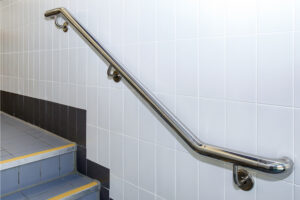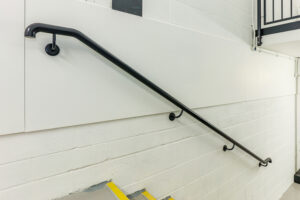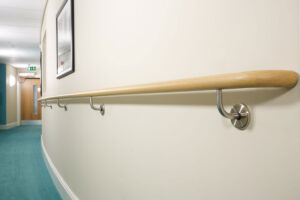How do Light Reflectance Values (LRV) affect handrail specification?
Posted on 5th January 2022What are Light Reflectance Values?
LRV’s are a measure of the percentage of visible and useable light that is reflected from a surface when illuminated by a light source. Measured on a scale of 0, absorbing black that reflects no light, to 100, reflecting white that reflects all light.
Simply put, the greater the contrast between surfaces the more likely the object is easily identifiable.
Why are they Light Reflectance Values important?
Equality Act 2010 requires all new and refurbished public buildings to offer equal access to all regardless of disability age or gender, ensuring safe entry, exit and passage through the building.
Those that are visually impaired need a strong visual contrast between various elements of the building, including doorways, fixtures, and fittings.
To achieve this, the relevant standards ask for 30 LRV points of difference between two surfaces.
How do Light Reflectance Values affect my handrail specification?
To design an inclusive building environment, consider the contrast between the handrail and the wall behind it. Handrails are available in a selection of finishes ranging from stainless steel to powder coated to timber.
Stainless steel finishes depend upon the level of polishing applied but as a rule of thumb, satin stainless steel has an LRV of 39 and high polished stainless steel has an LRV of 45.

Powder coated handrails are available in a range of RAL colours with varying LRV’s. RAL LRV listings are available here.

Timber handrails in Oak, Ash, Beech and Maple have the higher LRV’s ranging from 31 to 57.

